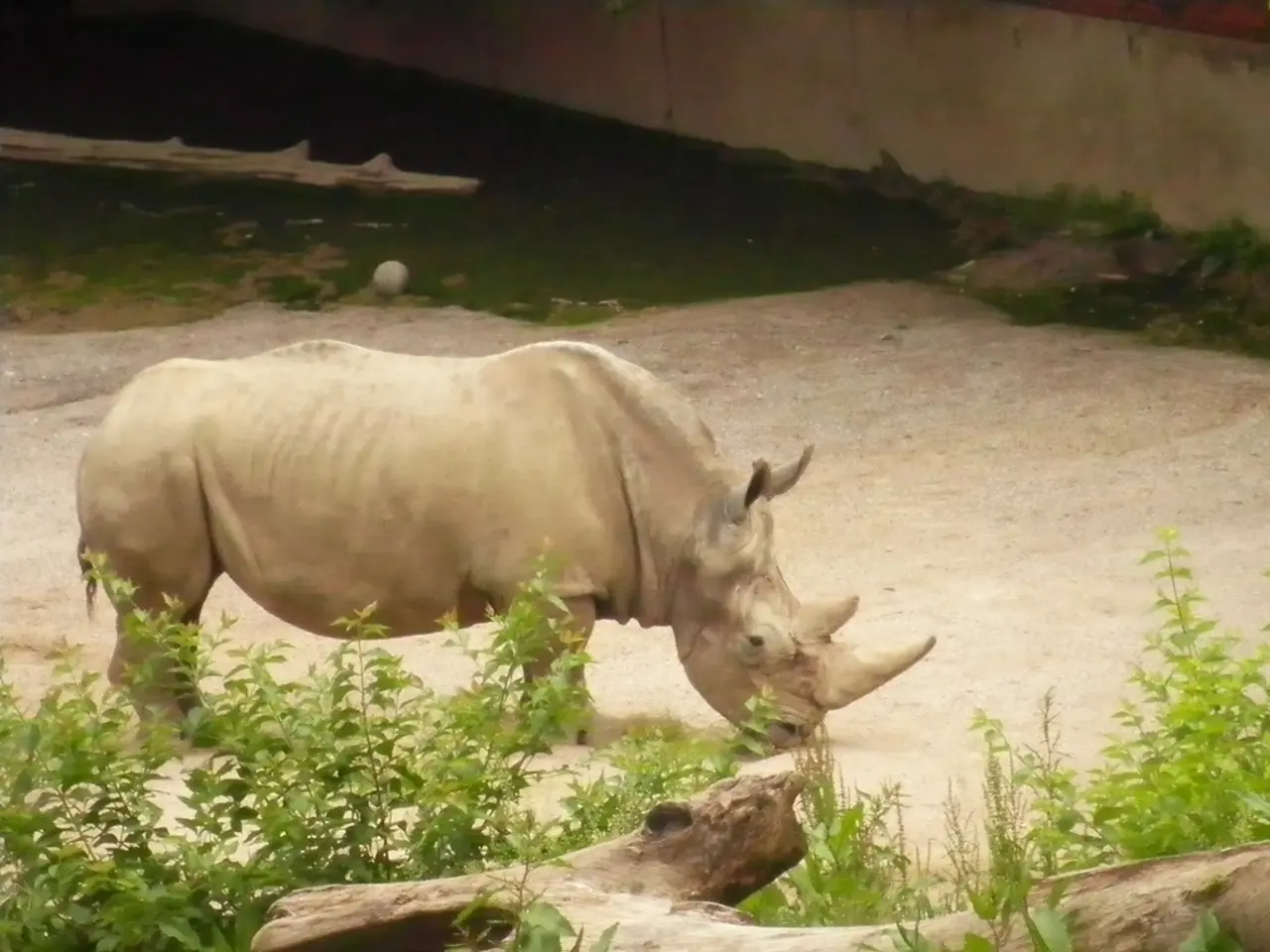Rhino tracking experience available at Kenyan animal sanctuary, allowing foot expeditions to observe endangered species
The Sera Rhino Sanctuary, nestled within Samburu's Sera Conservancy in Kenya, is a groundbreaking example of community-managed conservation. Established in 2015, it is East Africa's first and only sanctuary dedicated to the critically endangered black rhino, spanning approximately 27,000 acres.
This unique sanctuary operates through a community partnership with the Kenya Wildlife Service (KWS) and other stakeholders, marking a significant shift on the continent towards local communities managing endangered species rather than relying solely on centralized authorities.
Once a troubled area marred by ethnic conflicts and stock theft, the Sera Rhino Sanctuary has transformed the landscape into a safe haven. Technology-driven monitoring and well-trained anti-poaching units have played a crucial role in preventing poaching, with Kenya recently celebrating five years without a rhino poaching incident.
Community involvement is at the heart of the sanctuary's success. The local community manages the sanctuary and conservancy, fostering engagement in protecting rhinos and promoting sustainable use of the land. This approach empowers residents and links conservation success directly to community well-being.
Partnerships with government agencies like KWS provide legal frameworks and resources to support and strengthen community efforts. The Sera Rhino Sanctuary's collaborative approach has proven to be a powerful tool in the fight against the extinction of these magnificent creatures.
The Sera Rhino Sanctuary is home to Loijipu, a young black rhino raised by rangers and now living in a designated space within the sanctuary. Visitors can track both black and white rhinos on foot at the sanctuary, an experience that offers a unique connection with these endangered species.
Saruni Basecamp, the non-profit arm of Saruni Basecamp, is committed to supporting the Sera Rhino Sanctuary's mission. Tourism revenue at Saruni Rhino, a community-owned lodge that employs only local staff, funds local social services such as medical benefits, school scholarships, water access, employment, and transportation to clinics.
In 2023, four adult southern white rhinos were translocated from Lewa Wildlife Conservancy to Sera Rhino Sanctuary. Conservation fees at Saruni Rhino support anti-poaching efforts and habitat restoration. Jimmy Lekiondo, a Samburu safari guide at Saruni Rhino, specializes in rhino tracking, ensuring visitors have an unforgettable experience.
A stay at Saruni Rhino offers exclusive access to the Sera Rhino Sanctuary and its on-foot rhino tracking experience. Guests can even stay in a banda named after Loijipu. White rhinos, the second-largest land mammals on Earth, can be found at the sanctuary. The lodge Saruni Rhino has achieved a Silver Eco-Rating from Ecotourism Kenya, reflecting its commitment to sustainability.
The Sera Rhino Sanctuary exemplifies a successful blend of community management, technological monitoring, and multi-agency cooperation in the conservation of critically endangered rhinos while empowering local people in Samburu's Sera Conservancy.
- The Sera Rhino Sanctuary, an eco-friendly adventure, is a community-managed conservation effort in Kenya's Samburu Sera Conservancy, dedicated to critically endangered black rhinos.
- Established in 2015, it covers approximately 27,000 acres, acting as a safe haven for these species, once a troubled area by conflicts and theft.
- Technology-driven monitoring and anti-poaching units have played a crucial role in preventing poaching, leading to Kenya celebrating five years without a rhino poaching incident.
- The local community's involvement is key to the sanctuary's success, managing the sanctuary and land sustainably while promoting wildlife conservation.
- Partnerships with agencies like Kenya Wildlife Service (KWS) provide legal frameworks and resources to support community efforts in preserving endangered species.
- Visitors can embark on an unique wildlife adventure, tracking both black and white rhinos on foot at the sanctuary, fostering curiosity and health benefits associated with travel.
- Tourism revenue at Saruni Rhino, a community-owned lodge, supports local community welfare through social services like medical benefits, scholarships, water access, employment, and transportation to clinics.
- Guests at Saruni Rhino can experience a lifestyle immersed in sustainable earth-friendly practices, living near white rhinos, the second-largest land mammals, in a lodge that has achieved a Silver Eco-Rating from Ecotourism Kenya.




